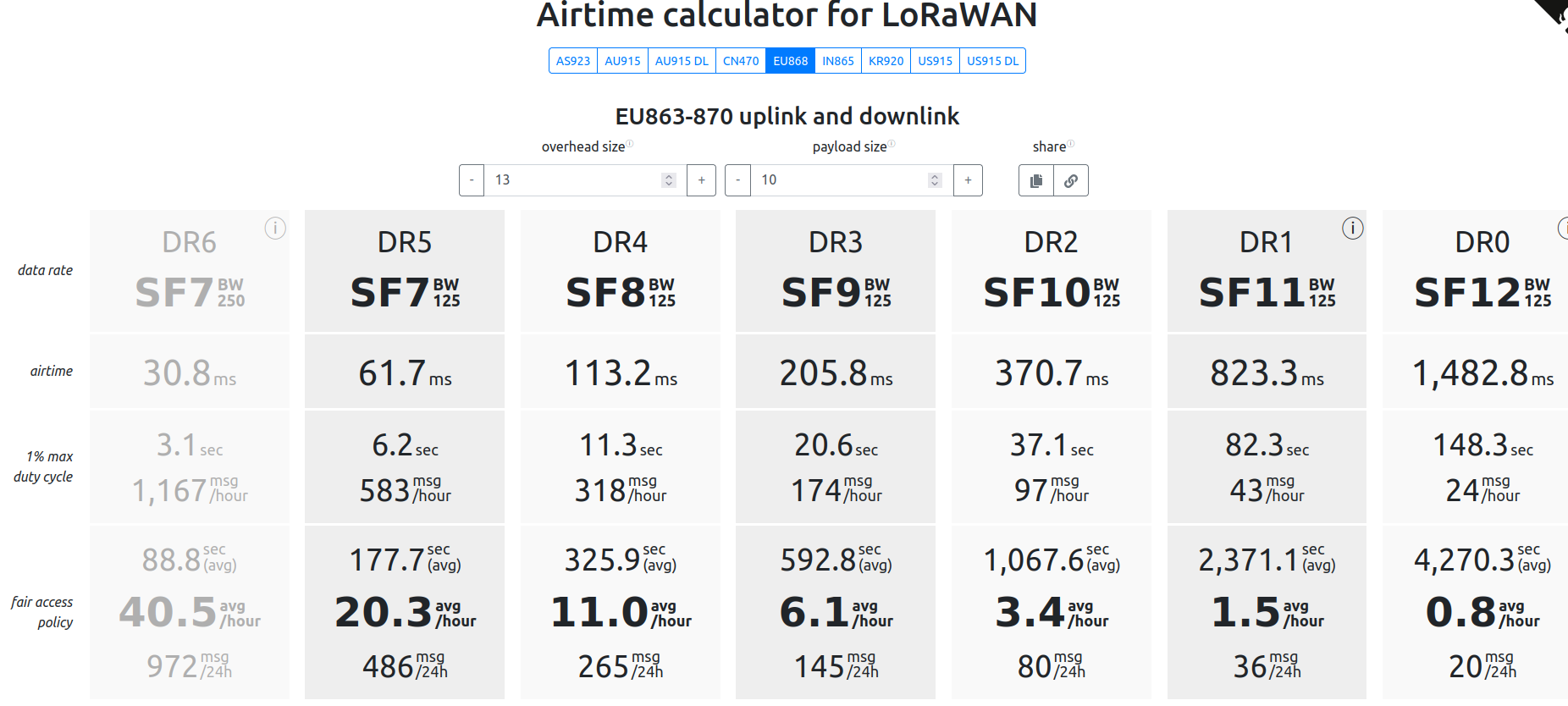Hello,
After some reading on the forum and some other docs on TTN, I understand that a node can send uplink messages:
- within the duty cylce rules as stated in the airtime calculator

- within the Fair Use Policy of TTN
To make sure my understanding is correct:
If I have a node sending a payload of 13+10 bytes, it will airtime for 61,7ms with SF7/BW 125
Technically, the node will have to wait for 6.2 sec before it can send another uplink message
But as per TTN Fair Use Policy, it should wait for almost 3 mn to send another uplink message.
This 3mn is an average and my node will be able to send the subsequent uplink message after 6.2 sec, it’s just that if there are too many triggers during a 24h period of time, once I have consumed my credit of 30 sec in, let’s say 1h, then I will hit the max for this day and I will have to wait for another 24h to resume activity for this node?
I am asking because I plan to use a node (dragino LDS02 or Milesight EM300-MCS) to monitor the state of a door (is it closed quickly after being opened). My external application will trigger a scenario to check on the status and notify me if the door si still open after 5 mn.
So most of the time, the door will be closed after opening way before the 3 mn FUP time is elapsed, but it is unlikely it wil be closed within the 6.2 sec delay of the 1% duty cycle.
I don’t expect the door to be opened many times during a day.
I have two solutions:
- monitor the status of the sensor: closed or open. But if the FUP is strictly enforced per event, then I will receive the uplink message with door status to “open” but I will not receive the uplink message with door status back to 'closed"
- monitor the status of the alarm of the sensor: I can set a period of time after which if the status is still “open” then an uplink message is sent. But I will not receive any uplink message when the status of the door is back to “closed”. Therefore my app chekcing on the alarm status will still see the foor as “open” and will notify me un-necessarily.
Or maybe my node can be programed so that it can send it’s status “open” or “close” on a regular interval, to be determined according to the FUP.
Thks for your confirmation of the FUP enforcement.
Valyno